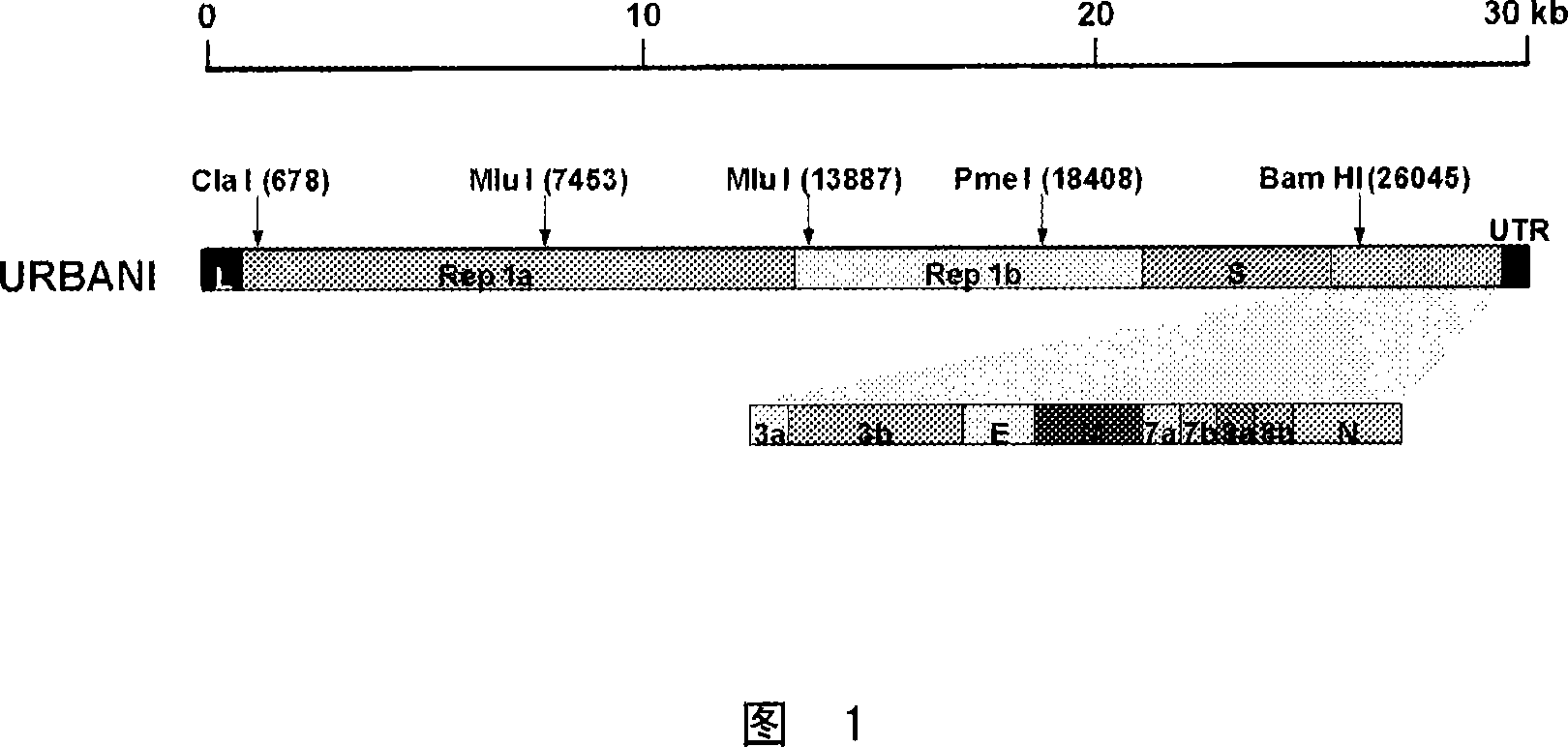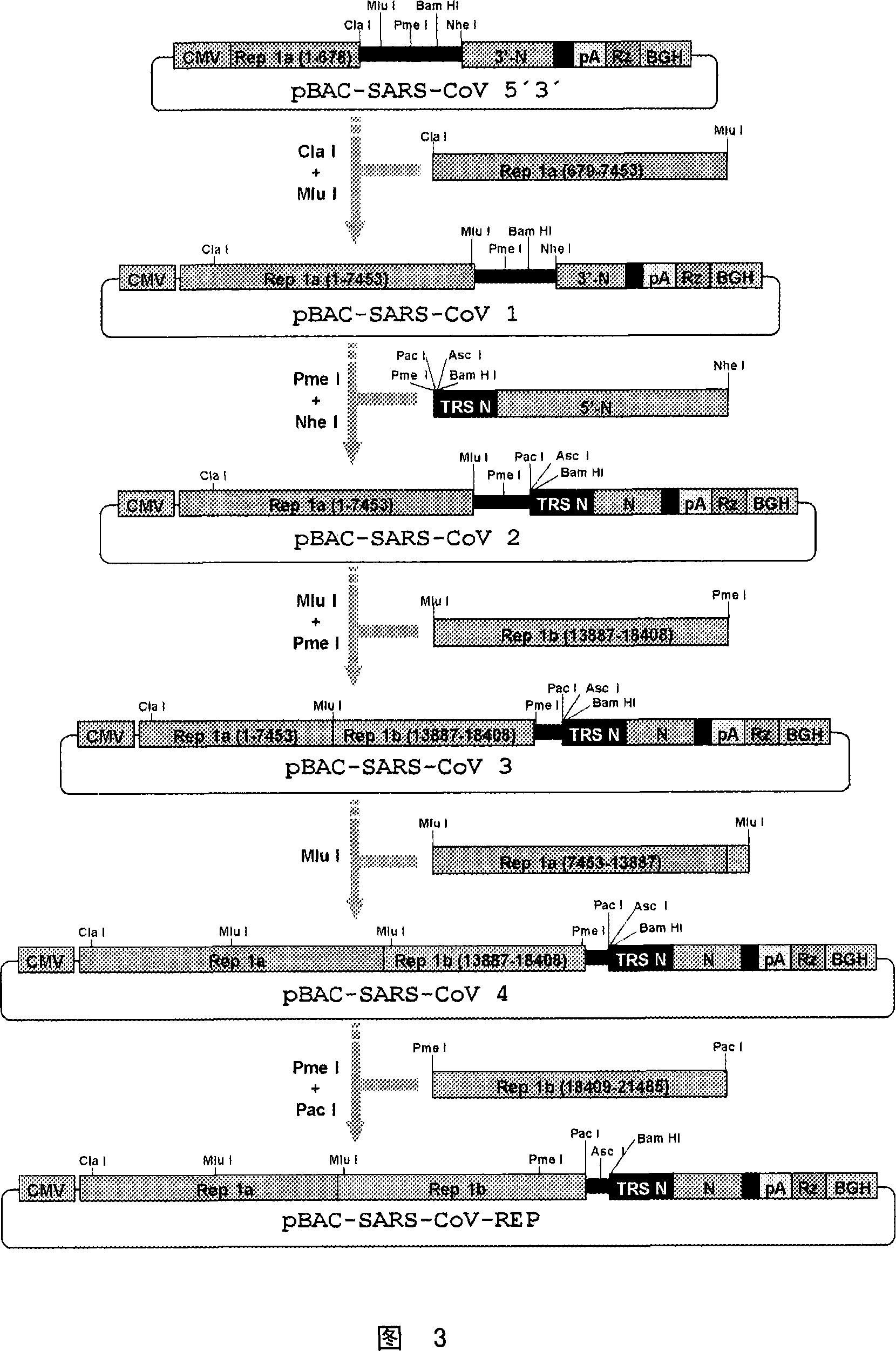Attenuated SARS and use as a vaccine
A virus, virus titer technology, used in DNA/RNA vaccination, vaccines, inactivation/attenuation, etc.
- Summary
- Abstract
- Description
- Claims
- Application Information
AI Technical Summary
Problems solved by technology
Method used
Image
Examples
Embodiment 1
[0161] Construction of SARS-CoV Replicon cDNA
[0162] A cDNA containing the untranslated 5' and 3' ends of the Urbani genome and the replicase and N genes was cloned as a BAC under the control of the CMV promoter.
[0163] In addition, a multiple cloning site containing unique restriction sites PacI, AscI and BamHI was cloned downstream of the replicase gene to allow cloning of heterologous genes (Fig. 3). This method uses a two-step amplification system that couples replicon RNA transcription in the nucleus from the CMV promoter with a second amplification step in the cytoplasm driven by a viral polymerase. The plasmid pBAC-SARS-CoV-REP encoding the SARS-CoV replicon was stable for at least 180 passages during proliferation in DH10B cells as determined by restriction enzyme analysis.
[0164] In a first step, suitable restriction sites in the viral genome that could be used to engineer replicons and full-length cDNA clones of SARS-CoV were identified (Fig. 1).
[0165] In ...
Embodiment 2
[0168] Analysis of cloned dDNA stability
[0169] The stability of the viral sequences cloned into pBeloBAC 11 was analyzed by studying the restriction enzyme patterns at different passages. Bacteria transformed with recombinant plasmids were grown at 37°C in 10 ml LB containing 12.5 μg / ml chloramphenicol. Cells from these primary cultures (considering passage 0) were diluted by daily dilution of 10 6 Doubling to multiply continuously. Each passage is considered to represent about 20 generations.
Embodiment 3
[0171] Sequence analysis
[0172] DNA was sequenced using an automated 373 DNA sequencer (Applied Biosystem) using fluorescent dye-labeled dideoxynucleotides and temperature resistant DNA polymerase (Perkin Elmer).
PUM
 Login to View More
Login to View More Abstract
Description
Claims
Application Information
 Login to View More
Login to View More - R&D
- Intellectual Property
- Life Sciences
- Materials
- Tech Scout
- Unparalleled Data Quality
- Higher Quality Content
- 60% Fewer Hallucinations
Browse by: Latest US Patents, China's latest patents, Technical Efficacy Thesaurus, Application Domain, Technology Topic, Popular Technical Reports.
© 2025 PatSnap. All rights reserved.Legal|Privacy policy|Modern Slavery Act Transparency Statement|Sitemap|About US| Contact US: help@patsnap.com



